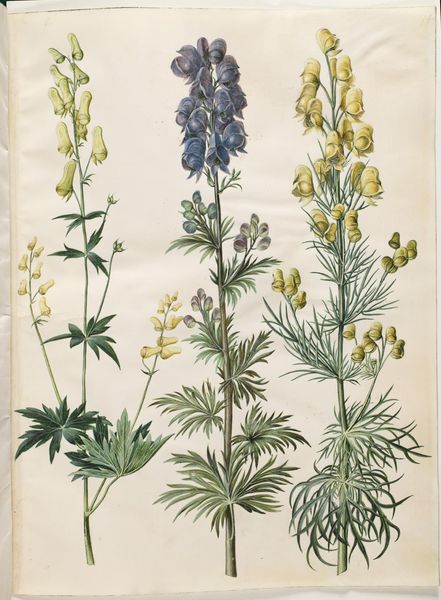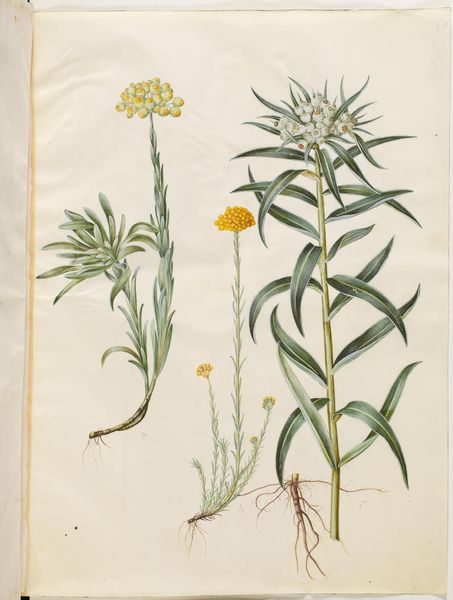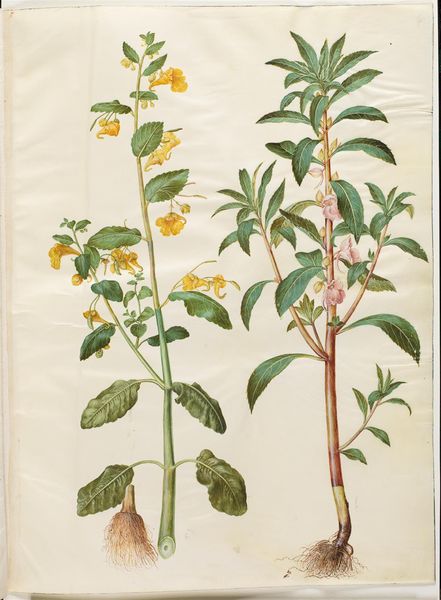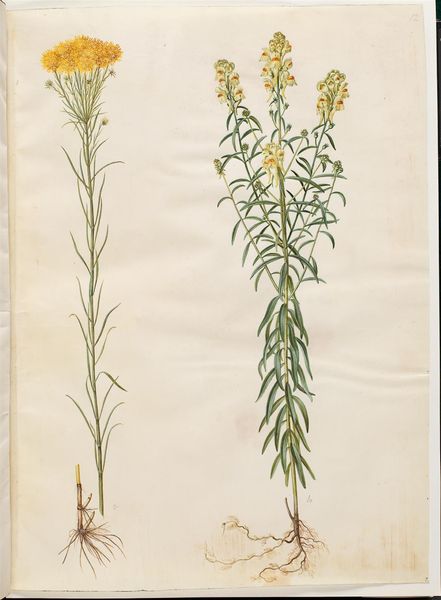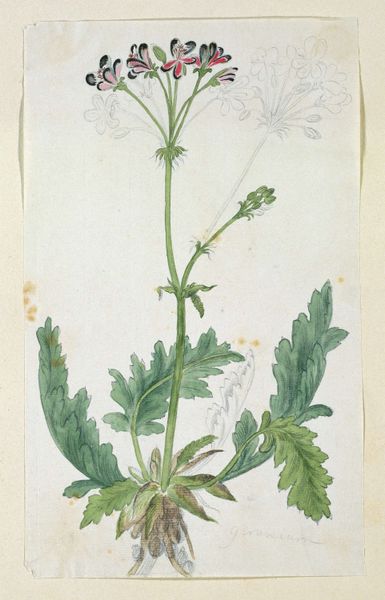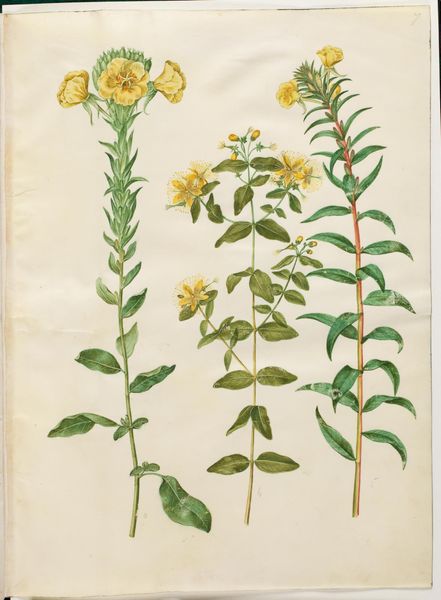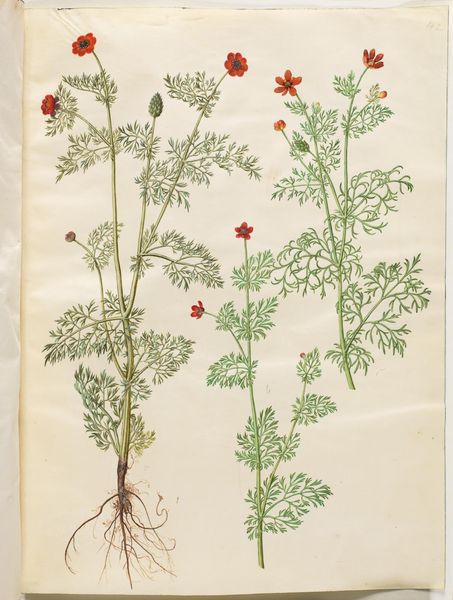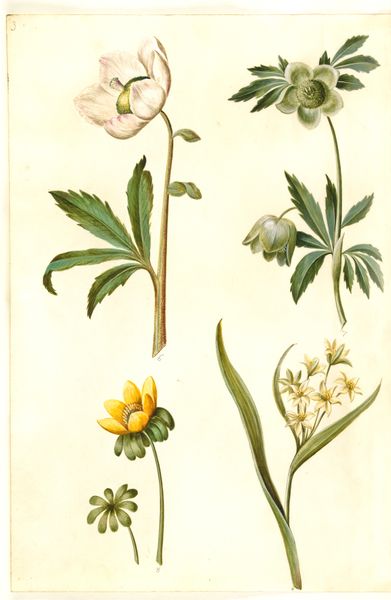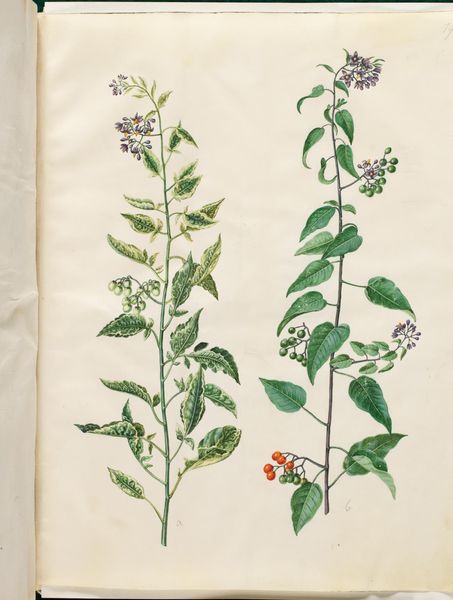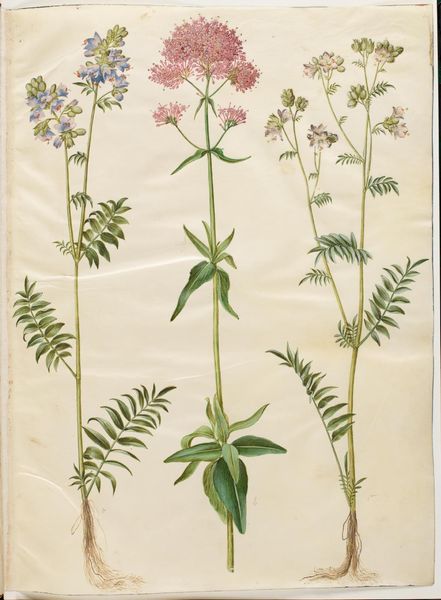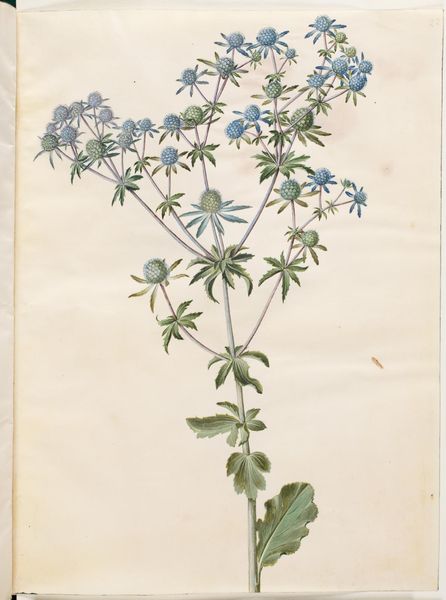
Eranthis hyemalis (have-erantis); Helleborus viridis (grøn nyserod); Helleborus foetidus (stinkende nyserod) 1649 - 1659
0:00
0:00
drawing, gouache
#
drawing
#
gouache
#
11_renaissance
#
watercolour illustration
#
botanical art
#
watercolor
Dimensions: 505 mm (height) x 385 mm (width) (bladmaal)
Hans Simon Holtzbecker crafted this image of Eranthis and Helleborus plants in the 17th century. Observe the Eranthis with its vibrant yellow flowers, emblems of the sun, rebirth, and the promise of spring. The Helleborus, however, offers a stark contrast. It signals a darker side, known historically for its medicinal uses, but also for its toxicity. Consider the symbolic weight of plants throughout history. From ancient Greece to the Renaissance, hellebores were associated with cleansing rituals and protection from evil spirits. The juxtaposition of the Eranthis and Helleborus reminds me of similar symbolic dualities in classical art, where light and dark, life and death, are often intertwined to convey deeper truths about the human condition. The collective memory of these plants, passed down through centuries of folklore and medicinal practice, invests them with a powerful, subconscious appeal. Holtzbecker’s work captures this interplay, engaging viewers on a deep, intuitive level. The dance between the Eranthis and Helleborus continues.
Comments
No comments
Be the first to comment and join the conversation on the ultimate creative platform.
